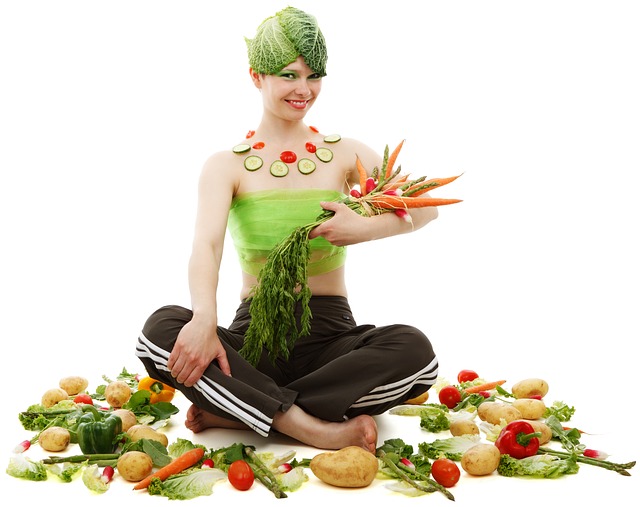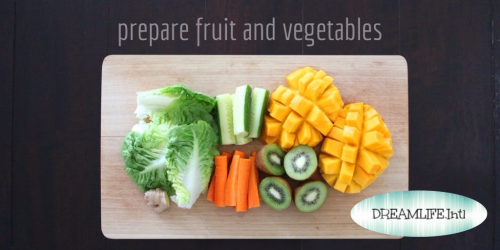The way you select, store and prepare fruit and vegetables
can go a long way towards locking in the most nutrition
And it will help you get the most nutritional benefit from the fruits and vegetables that you eat.
prepare fruit and vegetables
We’re looking at how you can lock in the nutrients in fruit and vegetables.
In order to keep the most nutrients in your fruits and vegetables, it’s sometimes helpful to understand how those nutrients can get lost in the first place. Fruits and vegetables can lose some of their nutritional value if they’re not properly handled.
For example, exposure to air, light and water can cause the loss of some nutrients. While short cooking times at moderate temperatures helps to keep nutrients in. And, in some cases, the way you prepare your foods can even make nutrients more usable by the body.
How to Shop for Fruits and Vegetables to Keep Nutrients In prepare fruit and vegetables
Choosing the freshest fruits and vegetables is the first step in making sure the nutrients are locked in.
The freshest fruits and vegetables are easy to spot. They’re free of blemishes and soft spots, they’re firm, and their colors are bright rather than dull. And, the freshest fruits and vegetables will have had the least exposure to air, light and water – all of which can cause nutrient losses.
Buying fruits and vegetables in season is a good idea, too.
When you buy fruits and vegetables out of season, they’ve had a long way to travel from the farm to your fork. Time in which valuable nutrients can be lost. If you’re fortunate to have a farmer’s market available to you, try to take advantage. In most cases, the fruits and vegetables are fresher and more locally sourced. Which means less chance of nutrient losses.
When fresh fruits and vegetables aren’t available, keep in mind that frozen fruits and veggies actually retain their nutrients quite well.
In some cases, frozen produce may actually offer more nutrition than fresh. For one thing, fruits and vegetables that are headed for the freezer case are usually picked at their peak of ripeness, when they’re most nutrient-packed. And they’re processed very quickly after picking. And then flash-frozen, which locks in freshness and nutrients.
How to Prepare Fruit and Vegetables to Keep Nutrients In

When it’s time to prepare, lightly wash, but don’t soak, your fruits and vegetables.
If the first utensil you tend to grab is your peeler, you might want to reconsider. The skins and peels of fruits and vegetables are good sources of vitamins, minerals and fiber. There’s no need to peel foods like apples, potatoes, carrots and cucumbers. Even foods that we usually do peel, like eggplant or kiwifruit, have edible skins. With citrus fruits, grate some of the tangy zest into salads and cooked vegetables to get a healthy dose of antioxidants. And don’t pare away the spongy white interior of the citrus peel—it’s full of water-soluble fiber.
Watch what you cut away, too.
There’s more vitamin C and calcium in broccoli stems than the florets, more nutrients in asparagus stalks than the tips. The hard center core of a pineapple has the highest concentration of bromelain, a natural enzyme which aids digestion.
Some nutrients, like a group of antioxidants known as carotenoids, are more available for the body when foods are lightly processed through chopping or cooking.
The carotenoid lycopene, which gives tomatoes their red color, is more readily usable by the body when it’s obtained from cooked tomatoes than it is from them raw. And your body will take up more of the carotenoid lutein; which gives the yellow-green color to foods like spinach and kiwifruit; from chopped spinach than it will from whole spinach leaves.
A tiny amount of fat helps with the absorption of carotenoids. So a few slices of avocado in your spinach salad or a little olive oil in your tomato sauce will boost your uptake.
How to Cook Fruit and Vegetables to Keep Nutrients In prepare fruit and vegetables
When you cook vegetables or fruits, the key to retaining nutrients is to use methods that require the least water.
Steaming is one of the best techniques. Since the food never comes in contact with the water, steaming helps to preserve precious water-soluble B vitamins and vitamin C.
Microwaving also uses very little water, and despite popular misconception, microwaving does not destroy nutrients. With either method, use as little water as you can. The other advantage to these methods is that they’re quick—shorter cooking times help preserve nutrients. For this reason, stir-frying your vegetables is also a good option to lock nutrients in.
Pairing your seasonings with your vegetables can boost nutrition, too.
Since the thousands of different antioxidants in plant foods work together to protect your health. So, add garlic to your broccoli, lemon peel to your green beans, or parsley to your carrots. Along with a flavor boost, you’ll get more nutritional value from your vegetables.
via Discover Good Nutrition, Fitness & Beauty.
